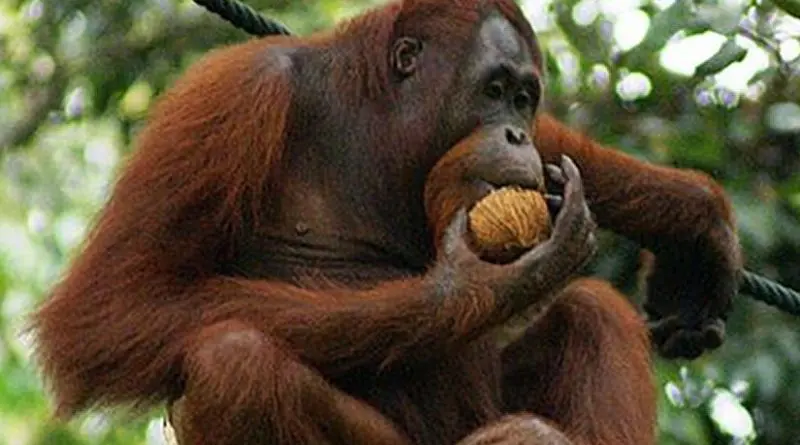More Sumatran Orangutans Than Previously Thought
A larger number of Sumatran orangutans live in the wild than previously thought, a new survey has revealed. The research team behind the survey, however, warn that continuing deforestation is likely to reduce their numbers substantially in the coming years. The results of the survey were published in Science Advances.
The survey was conducted by an international team of researchers from the University of Amsterdam, Liverpool John Moores University, the Max Planck Institute for Evolutionary Anthropology and various organisations in Indonesia.
Population size
An accurate estimation of the population size of the Sumatran orangutang is crucial for planning future conservation activities effectively. To cover the species’ complete range, the research team conducted surveys during which they counted more than 3,000 orangutan nests on more than 200 line transects covering more than 300 kilometres, equalling approximately to 14,600 Sumatran orangutans.
Sumatran orangutans live exclusively in the North of the Indonesian island Sumatra and are critically endangered. This great ape is threatened by poaching and forest loss as a result of its habitat being increasingly used for agricultural purposes. The researchers were delighted therefore to discover that approximately 14,600 of these animals still live in the wild today – 8,000 more than expected. Nevertheless, the researchers warn, should the deforestation of organgutangs’ habitat go ahead as planned, as many as 4,500 of these apes could vanish by 2030.
Habitat
‘It was very exciting to find out that there are more Sumatran orangutans than we thought, but this does not mean that we can be complacent’, said Serge Wich, professor by special appointment of Conservation of the Great Apes at the UvA and lead researcher of the project. ‘Numerous development projects are planned in the area that – if they are not stopped – could sharply reduce the number of orangutans over the coming years.’
According to the research team, it is vital that the Indonesian government, both national and provincial, implement measures to reduce or avoid negative impacts on forests where orangutans are found.
Dr Hjalmar Kuehl of the Max Planck Institute for Evolutionary Anthropology, added: ‘The Sumatran orangutans are the first ape taxon for which estimates of population size have changed considerably when taking a closer look, and they are likely not the last. Given the rapid development in field and analytical methods, we will likely see upwards or downwards corrections of the estimated population sizes for several of the other 12 ape taxa in the years to come. This will help us to better inform conservation policy and management and provide guidance for the improved protection of great apes.’

